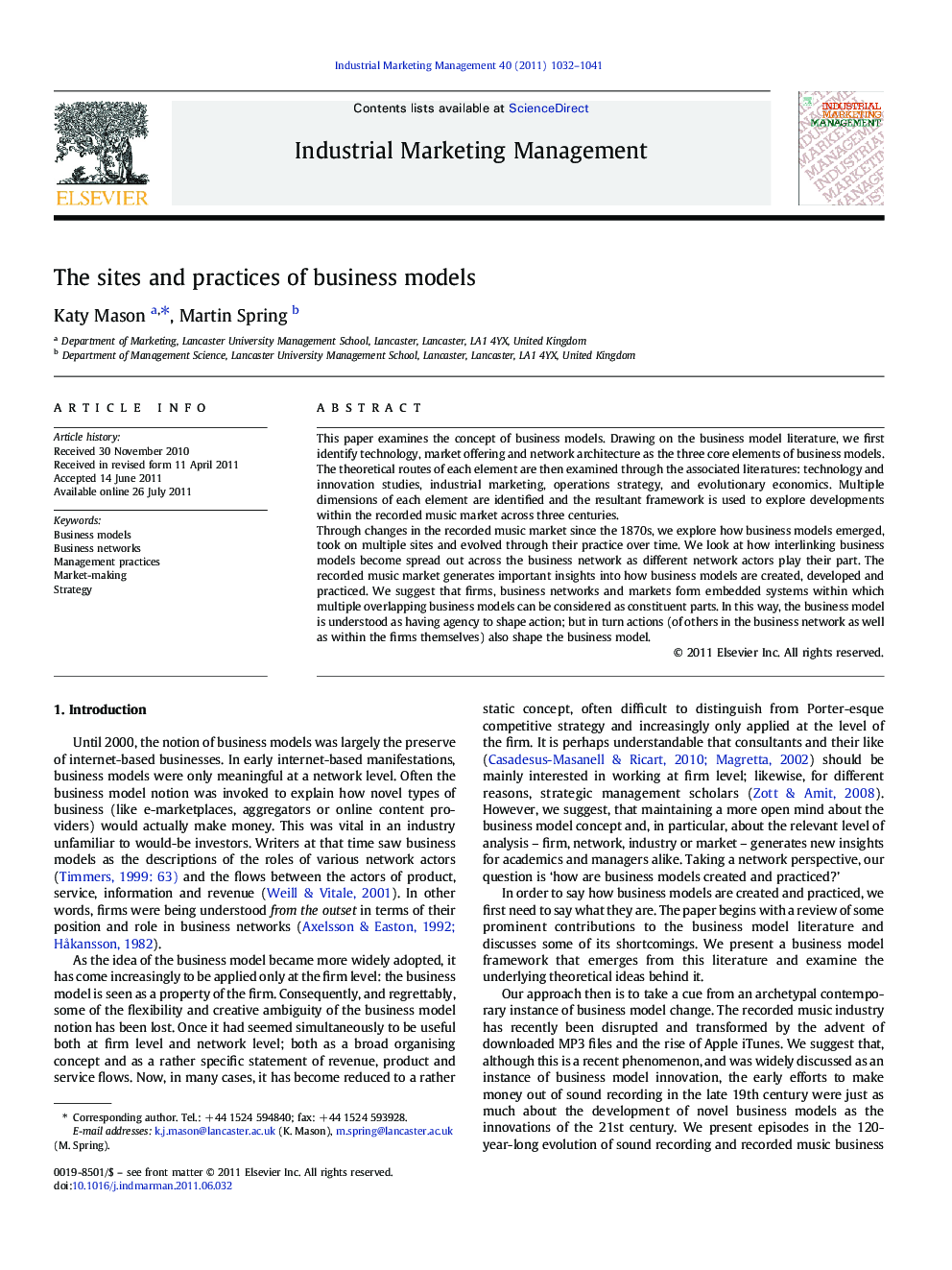| کد مقاله | کد نشریه | سال انتشار | مقاله انگلیسی | نسخه تمام متن |
|---|---|---|---|---|
| 1027950 | 942271 | 2011 | 10 صفحه PDF | دانلود رایگان |
کلمات کلیدی
۱- مقدمه
2. مدل کسب و کار
3. نظریهی مدلهای کسبوکار
شکل 1. عناصر مدل کسبوکار
3.1. فناوری
3.2. پیشنهاد بازار
شکل 2. فناوریهای یک iPod کلاسیک
3.3. معماری شبکه
4. مدلهای کسب و کار در عمل: صنعت موسیقی ضبطشده
5. موقعیت مدلهای کسب و کار: یک دیدگاه شبکهای
شکل 3. تکثیر موقعیتهای کسب و کار در موسیقی ضبطشده اوایل قرن نوزدهم.
6. کاربردها و اقداماتی که مدلهای کسب و کار را میسازند
7. نتایج و مفاهیم
This paper examines the concept of business models. Drawing on the business model literature, we first identify technology, market offering and network architecture as the three core elements of business models. The theoretical routes of each element are then examined through the associated literatures: technology and innovation studies, industrial marketing, operations strategy, and evolutionary economics. Multiple dimensions of each element are identified and the resultant framework is used to explore developments within the recorded music market across three centuries.Through changes in the recorded music market since the 1870s, we explore how business models emerged, took on multiple sites and evolved through their practice over time. We look at how interlinking business models become spread out across the business network as different network actors play their part. The recorded music market generates important insights into how business models are created, developed and practiced. We suggest that firms, business networks and markets form embedded systems within which multiple overlapping business models can be considered as constituent parts. In this way, the business model is understood as having agency to shape action; but in turn actions (of others in the business network as well as within the firms themselves) also shape the business model.
► Business models can be understood as bundles of practices.
► These practices connect technologies and markets through network architectures.
► Managers develop business models through interactions with other institutions.
► As business models take on multiple sites they enrol others in industries and markets.
► As framing devices, business models influence and shape collective and individual action.
Journal: Industrial Marketing Management - Volume 40, Issue 6, August 2011, Pages 1032–1041
